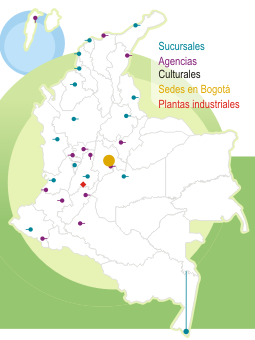Working Papers on Economics - Changes in the distribution of new loans by risk category throughout the post-pandemic credit cycle in Colombia
The series Working Papers on Economics is published by the Office for Economic Studies at the Banco de la República (Central Bank of Colombia). It contributes to the dissemination and promotion of the work by researchers from the institution. This series is indexed at Research Papers in Economics (RePEc).
On multiple occasions, these works have been the result of collaborative work with individuals from other national or international institutions. The works published are provisional, and their authors are fully responsible for the opinions expressed in them, as well as for possible mistakes. The opinions expressed herein are those of the authors and do not necessarily reflect the views of Banco de la República or its Board of Directors.
The series Working Papers on Economics contributes to the dissemination and promotion of the work by researchers from the institution. On multiple occasions, these works have been the result of collaborative work with individuals from other national or international institutions. This series is indexed at Research Papers in Economics (RePEc). The opinions contained in this document are the sole responsibility of the author and do not commit Banco de la República or its Board of Directors.
Abstract
Following the pandemic, the Colombia’s financial system experienced a pronounced credit cycle, with significant real growth in consumer loans followed by a deceleration from late 2022. This paper uses granular loan-level data to analyse how financial intermediaries adjusted the credit risk composition of new loans throughout this cycle. It examines the implications of these shifts for loan supply dynamics and financial conditions. Additionally, the study explores the interaction between credit risk composition and monetary policy transmission during the 2021–24 period. As monetary tightening led to rising lending rates, changes in loan composition—particularly the increased share of riskier borrowers—amplified the observed transmission of policy rates to average lending costs, especially in the consumer credit segment. The findings highlight the importance of credit risk dynamics in assessing monetary policy effectiveness and demonstrate the value of disaggregated data in understanding macro-financial conditions.
"This document illustrates how changes in the risk composition of the portfolio amplified the transmission of monetary policy to average loan interest rates throughout the credit cycle and demonstrates the value of disaggregated data for understanding the macro-financial conditions of the economy."

































































